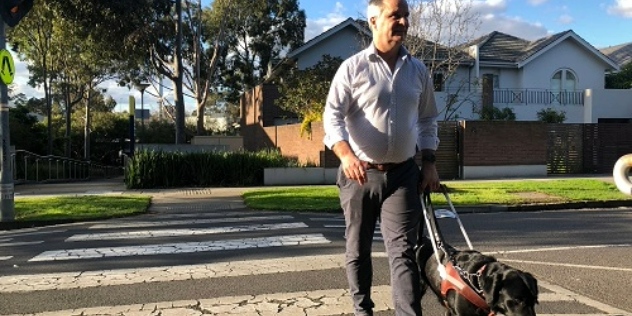Australia strikes sound balance in new electric vehicle rule

Approximately 160 pedestrians die on Australian roads every year, and according to hospital data the majority of pedestrian injuries are caused by collisions with light vehicles.
Sales of electric vehicles (which includes battery electric vehicles – BEVs - and plug-in hybrids, or PHEVs) and non-pluggable hybrids are on the up as Australians seek to reduce dollars spent at the bowser.
This trend is particularly the case for drivers who commute longer distances for work. An EV discount waiving the fringe benefits tax for BEVs and PHEVs purchased via salary sacrifice is seeing an increasing uptake of electric vehicles in Sydney’s outer suburbs.
The new legislation mandating Acoustic Vehicle Alerting Systems (AVAS) for electric and hybrid vehicles was confirmed in April by the Department of Infrastructure and Transport, and is projected to prevent approximately 68 deaths, 2,675 severe injuries, and 2,962 minor injuries by 2060, with an estimated cost savings of $208 million for the Australian community.
“As more and more Australians choose to drive EVs we are committed to ensuring that they are safe for both driver and others using the road,” said Infrastructure, Transport, Regional Development and Local Government Minister Catherine King.
“This is a significant win for those the blind and low-vision community who have long been advocating for alert systems like this to be introduced in Australia.”
The announcement was backed up by the Minister for Social Services Amanda Rishworth and Minister for the National Disability Insurance Scheme Bill Shorten, who said “It’s great that the blind and low vision communities’ concerns have been taken into account to create the Australian Design Rule meaning new electric vehicles will be fitted with an AVAS from November next year”.
“This new Design Rule will ultimately improve road safety for everyone on our roads.”
The move aligns with similar policies in the USA and Europe aimed at enhancing pedestrian safety around quieter electric vehicles. Both the EU and the USA have implemented regulations requiring such systems on new electric vehicles since July 2019 and March 2020, respectively.
As more and more Australians choose to drive EVs we are committed to ensuring that they are safe for both driver and others using the road
— Minister Catherine King, Infrastructure, Transport, Regional Development and Local Government
What does the new AVAS rule mandate?
The new rule will take the form of an addition to the Australian Design Rule (ADR) which governs vehicle design. It mandates that all new model passenger vehicles, buses and trucks must be fitted with an AVAS system emitting sound levels of at least 50 decibels and not louder than 75 decibels when travelling up to 20km/hr (faster is permitted but not a requirement under the law.)
From November 2026, all car models (not just new models) must adhere to the law to be sold legally within Australia.
For reference, 50 decibels is about as loud as a quiet refrigerator, while 75 decibels is as loud as a dishwasher. A typical truck travelling at 65km/hr is about 84 decibels, and an ICE car travelling at 100km/hr is 77 decibels, according to this decibel chart from Purdue University in Indiana, US.
The response from the public to this legislation has been mixed. While many appreciate the focus on safety, especially for visually impaired individuals, others are concerned that the law will add more noise to Australia’s roads, just when the introduction of EVs is offering a respite from that.
But several electric vehicles (EVs) already come equipped with Acoustic Vehicle Alerting Systems (AVAS) even before the recent legislation requiring such features.
High-profile examples include the Audi e-Tron, which offers various body styles like the SUV and Coupe SUV, the BMW iX series, and the Hyundai Kona Electric.
Tesla introduced "Boombox" to certain models in early 2023 to AVAS system. This is essentially an external speaker with settings accessible via the Boombox app, and it includes AVAS, or PWS - pedestrian warning system - functionality. This can be retrofitted, at a cost, to earlier Tesla models (although the legislation does not require this.)
Regarding hybrids and internal combustion engine (ICE) vehicles, it's notable that many modern models, especially those designed for efficiency, are also very quiet. However, the new rule does not apply to ICE vehicles.
Vision Australia supports AVAS
The introduction of Acoustic Vehicle Alerting Systems (AVAS) in Australia has been met with significant advocacy and support, especially from organisations representing the visually impaired, such as Vision Australia.
Vision Australia has been instrumental in pushing for this legislation, citing the safety benefits for pedestrians who rely on auditory signals for navigating public spaces.
“We are ecstatic and congratulate the current federal government for listening to our concerns and acting on this very important issue as pedestrians who are blind or have low vision will be able to navigate public spaces with more confidence,” director of government relations, advocacy and NDIS for Vision Australia, Chris Edwards said in a statement.

Director of government relations, advocacy and NDIS for
Vision Australia Chris Edwards and Eva, his Seeing Eye Dog.
“It’s been a long road, but through persistence and putting the safety of Australia’s blind and low vision community in front of the government, we’ve achieved the result we wanted. We also recognise the proactive step the government has taken in expanding the requirement to include electric trucks, busses and other heavy vehicles.”
As we steer into a quieter, electric transport future, this new rule ensures that our vehicles will be safer for everyone on and near our roads, achieving a sound balance between silence and safety.
This article has been updated to correct information about the Tesla Boombox addition.


